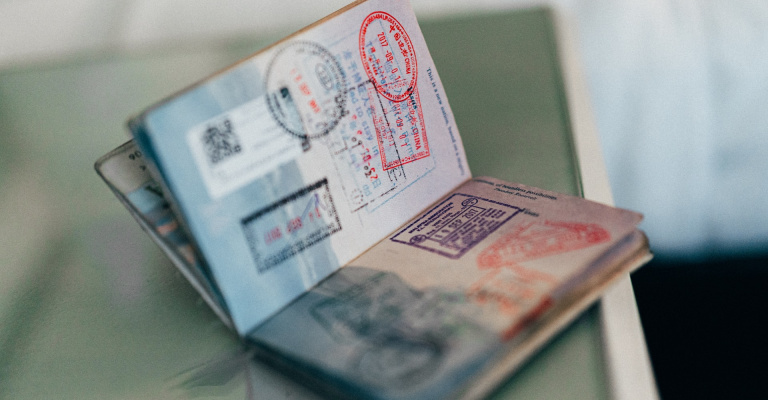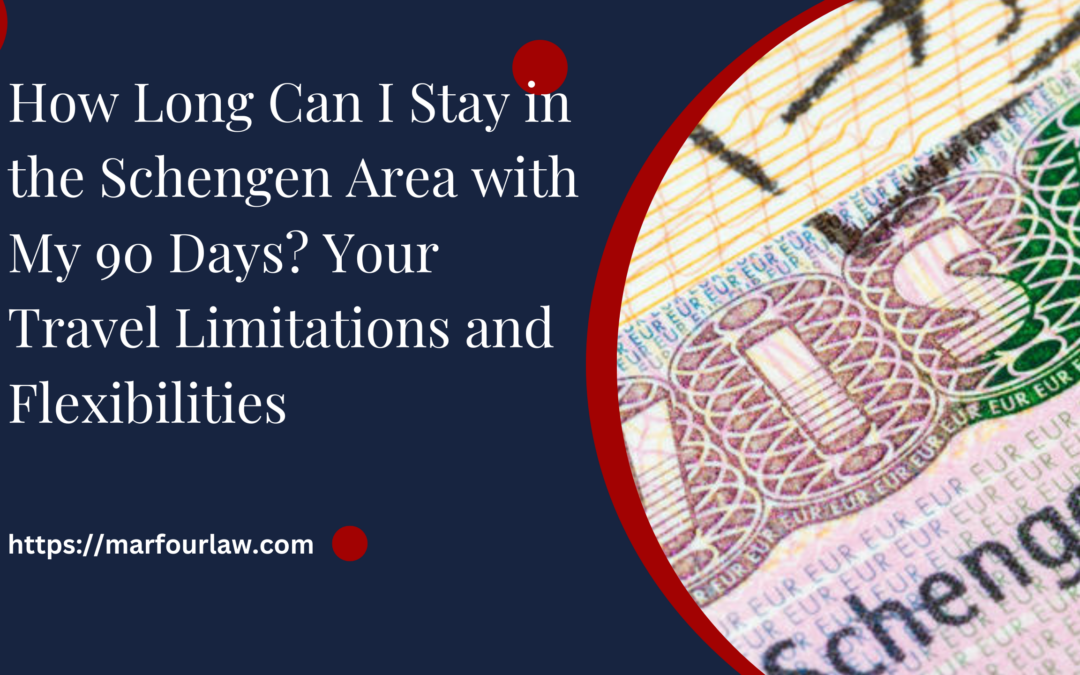When planning a trip to Europe, one of the most critical questions travelers ask is, “How long can I Stay in the Schengen Area with My 90 Days?” This query is crucial for anyone hoping to explore multiple countries within the Schengen Zone. Whether you’re backpacking through Europe or visiting for work or leisure, knowing the limits of your stay is essential to avoid overstaying your welcome and facing potential penalties.
How Long Can I Stay in the Schengen Area with My 90 Days?
When it comes to traveling within the Schengen Area, the 90/180 rule is a fundamental principle. It essentially means you can stay within Schengen countries for up to 90 days within any 180 days. But how does this rule actually work, and what does it mean for your travel plans?
90-Day Rule Explained
The Schengen Area allows you to stay for up to 90 days within any 180 days. This means you can spend a total of 90 days in the Schengen countries, but these days are counted within a rolling window of 180 days. It’s not about staying 90 days in a row but rather keeping track of your total time spent within that six-month window. If you reach 90 days, you need to leave and wait until the rolling window resets before you can return.
Counting Your 90 Days
Understanding how to count your days is crucial. Imagine a sliding window: you’re allowed to stay for 90 days, but this is calculated based on any 180 days. You’ll need to keep track of the days you’ve spent in the Schengen Area and subtract them from the total 90 allowed days. For instance, if you spent 30 days in the Schengen Area, you’ll have 60 days left within the next 150 days before you need to exit again.
What Happens if You Overstay?
Overstaying your 90-day limit can have serious consequences. If you stay beyond your allowed time, you might face fines or deportation. Furthermore, you could be banned from entering the Schengen Area in the future, which could impact your travel plans. To avoid these issues, it’s essential to keep track of your days and ensure you don’t exceed the limit. If you accidentally overstay, you’ll need to resolve the situation with immigration authorities, which can be stressful and inconvenient.
How Long Can You Stay in the E.U. Without a Visa?
Planning a trip to the European Union? You might be curious about how long you can stay without a visa. Let’s break it down so you can plan your visit with confidence.

Short Stays in the E.U.
If you come from a visa-exempt country, staying in the E.U. is usually straightforward. Most visitors can stay for up to 90 days within 180 days without needing a visa. This rule covers tourism, business trips, and visits to family or friends.
To simplify, imagine you have a 90-day ticket that allows you to travel around the Schengen Area. These 90 days can be used anytime within a 180-day window. So, you could spend a month here, leave for a while, and come back for another couple of months, as long as you don’t exceed the total of 90 days in the 180 days.
It’s crucial to keep track of how many days you’ve spent in the E.U. Overstaying this limit can lead to problems, such as fines or even being barred from re-entering the Schengen Area. Keeping a personal log or using a travel app to monitor your days can help you stay within the rules.
Staying Longer Than 90 Days
If you want to extend your stay beyond 90 days, you’ll need to apply for a visa or residence permit, depending on the purpose of your stay. This could be for studying, working, or living in the E.U.
Different E.U. countries have varying rules and application processes for long-term stays. For example, if you’re moving to study, you’d apply for a student visa. If you’re getting a job, you’d need a work permit. Each country sets its requirements, so it’s essential to check with the specific country’s embassy or consulate for detailed information.
Longer-term visas often require proof of purpose, such as acceptance into a university, a job offer, or financial stability. Be sure to apply well in advance of your planned stay to avoid any last-minute issues.
Schengen Area and Its Rules
The Schengen Area includes 27 European countries that have agreed to eliminate internal border controls among themselves. If you’re staying in this area, the 90-day rule applies collectively across all member countries. This means the total number of days you spend in any Schengen country counts toward your 90-day limit.
However, not all E.U. countries are part of the Schengen Area, and not all non-EU countries are excluded from the 90-day rule. For example, the United Kingdom (which has left the E.U.) and Ireland have their own border rules. Similarly, some non-EU countries like Switzerland are part of the Schengen Area.
If you’re planning to visit countries outside the Schengen Area during your trip, you’ll need to be aware of different visa requirements and limits. Make sure to research the rules for each country you plan to visit.
Overstaying and Consequences
Overstaying your allowed time in the E.U. can lead to serious consequences. If you stay beyond your 90-day limit, you might face fines, deportation, or even a ban from entering the Schengen Area for a certain period.
To avoid these problems, it’s important to stick to your 90-day limit. If you find that you need to stay longer than allowed, look into obtaining the appropriate visa or residence permit as early as possible.
Visa-Free Access for Different Countries
The 90-day visa-free rule applies to citizens of certain countries. If you’re unsure whether you need a visa, it’s a good idea to check with the consulate or embassy of the country you plan to visit. They can provide the most accurate and current information regarding visa requirements.
Knowing the specific rules for your situation helps avoid any unexpected issues during your travels. Whether you’re planning a quick trip or an extended stay, understanding these guidelines ensures that your visit to the E.U. goes smoothly and that you stay within the legal limits. Enjoy your travels and make the most of your time in Europe!
How Long Can You Stay in Europe Without a Visa?
If you’re traveling from outside the European Union (E.U.), you might be curious about how long you can stay in Europe without needing a visa. The answer largely depends on whether the country you are visiting is part of the Schengen Area. The Schengen Area is a group of 27 European countries that have agreed to allow free movement between them without passport checks. This includes most E.U. countries and a few non-EU countries like Norway and Switzerland.
For most non-EU visitors, you can stay in the Schengen Area for a maximum of 90 days within 180 days without a visa. Think of it like a giant open space where you can travel freely among member countries. This 90-day period isn’t necessarily consecutive. You can split these days up however you want, as long as the total does not exceed 90 days within any 180-day timeframe.
90/180 Rule Explained
The 90/180 rule might sound complicated, but it’s actually quite straightforward once you get the hang of it. Here’s how it works:
- 90 Days in Any 180 Days: The rule states that you can spend up to 90 days in the Schengen Area within any 180 days. This means if you spend 30 days in the Schengen Area, you can return after being away for 150 days before your next stay.
- Rolling Calculation: The calculation isn’t just from the start of your trip to the end. It’s a rolling 180-day period. This means every day you stay in the Schengen Area, the last 180 days are considered to determine if you’ve reached the 90-day limit.
- Tracking Your Days: To manage this, you need to keep track of your entry and exit dates. If you reach 90 days, you must leave and wait until the 180-day period resets enough to allow a return.
Different Rules for Different Countries
It’s essential to know that not all European countries follow the Schengen rules. For instance:
- The United Kingdom and Ireland: Before Brexit, the U.K. was part of the Schengen Area, but now it has its visa policies. If you plan to visit these countries, check their specific visa requirements separately.
- Non-Schengen EU Countries: Some E.U. countries, like Croatia and Romania, have their own visa rules. Even if they are part of the E.U., they may not follow the Schengen visa regulations.
Always verify the visa and entry requirements for each specific country you plan to visit, as rules can vary.
Consequences of Overstaying
If you accidentally overstay your 90-day limit, there can be serious consequences:
- Fines and Penalties: Overstaying can result in fines or other penalties. The exact amount can vary depending on the country and how long you’ve overstayed.
- Deportation: Authorities may deport you and bar you from re-entering the Schengen Area for a certain period.
- Entry Ban: You might face a ban from entering the Schengen Area for an extended period, which could affect your future travel plans.
To avoid these issues, it’s crucial to track your stay carefully and adhere to the visa-free travel limits.
Tips for Keeping Track of Your Stay
Keeping track of your time in Europe can seem like a hassle, but it’s manageable with a few simple tools:

Calendars and Apps:
Use a calendar to mark the dates of your entries and exits. Several travel apps and websites can help you track the number of days you’ve spent in the Schengen Area.
Online Tools:
There are online calculators available that help you figure out how many days you have left based on your travel dates. These tools can simplify the process and prevent any accidental overstays.
Planning Ahead:
If you’re planning to stay close to the limit, keep a detailed record of your travel days and plan your trips accordingly to avoid any surprises.
By following these guidelines and keeping track of your days, you can enjoy your European travels without running into any visa issues. Safe travels, and enjoy your time exploring Europe!
Is Ireland Part of Schengen?
When it comes to traveling across Europe, you might wonder if Ireland is part of the Schengen Area. This question is common for those planning trips to multiple countries in Europe. Let’s break down what this means and how it affects your travel plans.
What is the Schengen Area?
The Schengen Area is a group of European countries that have abolished passport controls at their mutual borders. Essentially, once you enter one Schengen country, you can move freely across the others without needing to go through additional border checks. It’s like having a single-entry visa for a group of countries, making travel much simpler and more convenient.
Ireland’s Status in the Schengen Area
Now, let’s clear things up about Ireland. Unlike most of the European Union countries, Ireland is not part of the Schengen Area. This means that if you’re traveling to Ireland from a Schengen country, you will still have to go through border control when you arrive in Ireland. It’s similar to how different states in the U.S. have their regulations even though you can travel freely within the country.
Why Isn’t Ireland in Schengen?
You might ask, “Why isn’t Ireland part of the Schengen Area?” Ireland has opted out of the Schengen Agreement to maintain its border controls. This choice gives Ireland more control over its immigration policies. Think of it like a house with a security system, even though it’s part of a neighborhood with open gates.
Travel Tips for Ireland and Schengen Area Countries
If you’re planning to visit both Ireland and Schengen countries, be prepared for different entry and exit requirements. For Schengen countries, you’ll need a Schengen visa, while for Ireland, you’ll need a separate visa or travel authorization. Always check the latest entry requirements before you travel, as rules can change.
In summary, while Ireland offers beautiful landscapes and rich history, it operates outside the Schengen framework. This means you’ll experience separate border controls when traveling between Ireland and Schengen countries. Keep this in mind when planning your European adventure to ensure a smooth and enjoyable trip!
What You Need to Know About the 90 Days in 180 Days Rule?
If you’re planning to visit or live in a Schengen Area country, you’ve probably heard of the 90/180 rule. This rule is all about how long you can stay in these countries, within six months. Let’s break it down to see how it works and why it’s important.
How the 90 Days in 180 Days Rule Works?
The 90/180 rule means you can stay in the Schengen Area for a total of 90 days within any 180 days. The catch? You need to count backward from the current date to figure out if you’re within this limit. For example, if you’ve spent 30 days in the Schengen Area, you need to check if you’re staying within the 90-day limit when looking back over the last 180 days. This ensures that you don’t exceed your allowed time over any 180 days.
Why Should You Keep Track?
Why is it so crucial to track these days? Overstaying can lead to fines, deportation, or even a ban on entering the Schengen Area in the future. It’s not just about keeping a calendar; it’s about staying within the rules to avoid any unwanted legal trouble. Regularly checking how many days you’ve spent in the area helps you manage your stay better and avoids surprises at the border.
Tips for Managing Your Stay
Keeping track of your days doesn’t have to be a headache. There are several apps and online tools that can help you monitor your stay. Many of these tools calculate the 90/180 days for you, so you don’t have to do the math manually. Also, keeping a personal log of your entries and exits can be a handy way to stay on top of your days.
What Happens If You Exceed the Limit?
Exceeding the 90 days in 180 days can have serious consequences. If you overstay, you might face penalties like fines, a ban from entering Schengen countries, or even deportation. Each country has its enforcement procedures, so the exact outcome can vary. It’s always best to stay within the limits to ensure a smooth travel experience.
The 90/180 rule might seem complex at first, but with a bit of planning and the right tools, you can easily manage your stays within the Schengen Area. Keeping track of your time and knowing your limits helps you avoid any legal hassles and ensures your travels go smoothly. If you’re unsure about your status, it’s always a good idea to check with immigration authorities or use reliable tracking tools.
How Many Months is 90 Days?
When you hear the term “90 days,” you might wonder how that translates into months. This is a common question because days and months don’t always align perfectly. Let’s break it down in a simple way.

Converting Days to Months
First, let’s get to the basics. On average, a month is roughly 30 days long. This is a general rule of thumb, though some months have 31 days, and February has 28 or 29 days. So, when you want to figure out how many months 90 days is, you start by dividing 90 by the average number of days in a month.
Calculation Example
If you divide 90 by 30 (the average number of days in a month), you get 3. This means that 90 days is approximately 3 months. Keep in mind that this is a rough estimate. Some months are a bit longer, and some are shorter, so the exact number of months could be slightly different.
Practical Application
In practical terms, if you’re planning something or trying to understand a time frame, thinking of 90 days as about 3 months will give you a good ballpark figure. For example, if you’re setting up a plan that spans 90 days, you can reasonably expect it to cover 3 months, although the exact overlap with calendar months might vary.
Why Does It Matters?
Knowing how to convert days into months can be useful for various reasons. Whether you’re tracking a project timeline, managing a subscription, or just curious about how long something will last, having a basic idea of this conversion helps you stay on top of your schedules and plans. It’s like having a little cheat sheet for time management.
In summary, 90 days roughly translates to about 3 months. This simple calculation helps you get a clearer picture of how time spans out in everyday terms.
Marfour International Law Firm is a leading legal practice known for its expertise in international law and tailored legal solutions. With a commitment to providing comprehensive support, Marfour specializes in various areas including corporate law, immigration, and real estate, offering personalized services to meet the unique needs of each client. Their team of experienced attorneys is dedicated to navigating complex legal landscapes and ensuring effective representation, making Marfour a trusted partner for individuals and businesses alike. Whether you’re seeking guidance on international transactions or need assistance with legal matters abroad, Marfour stands ready to offer expert advice and innovative solutions.
FAQs
Below are answers to some of the most common questions travelers have about staying in the Schengen Area, ensuring you have all the information you need for a smooth trip.
Can I extend my 90-day stay in the Schengen Area?
Generally, you cannot extend a short-stay Schengen visa beyond the 90-day limit. However, in exceptional cases, such as medical emergencies or urgent family matters, some countries may grant extensions. It’s best to check with the immigration authorities of the specific country you are in.
What happens if I overstay my 90 days in the Schengen Area?
Overstaying can lead to severe consequences, including fines, deportation, and a potential ban from entering the Schengen Area in the future. The severity of the penalty depends on the length of the overstay and the specific country’s regulations.
Can I re-enter the Schengen Area after 90 days?
Yes, you can re-enter the Schengen Area after your 90 days are up, but only after you have spent 90 days outside the Schengen Zone within the 180 days. This rolling period requires careful planning to avoid overstays.
How do I calculate my remaining days in the Schengen Area?
To calculate your remaining days, count the days you have already spent in the Schengen Zone within the last 180 days. Subtract this from 90 to determine how many days you have left. Several online calculators can assist with this.
Are there any exceptions to the 90/180 rule?
There are very few exceptions to this rule. Some specific visas, long-stay permits, or bilateral agreements between certain countries and Schengen states might offer more flexibility. Always verify with the embassy or consulate of the country you are visiting.
Conclusion
Traveling within the Schengen Area can be a delightful and enriching experience, but it requires careful planning and adherence to the 90/180 rule. Understanding how long you can stay in the Schengen Area within 90 days is crucial for a hassle-free journey. By keeping track of your days, planning your itinerary wisely, and familiarizing yourself with the visa policies of each country you visit, you can enjoy your European adventure to the fullest. Whether you’re exploring the historic cities, relaxing on Mediterranean beaches, or experiencing the diverse cultures, staying informed and prepared ensures a memorable and stress-free trip. Safe travels!

